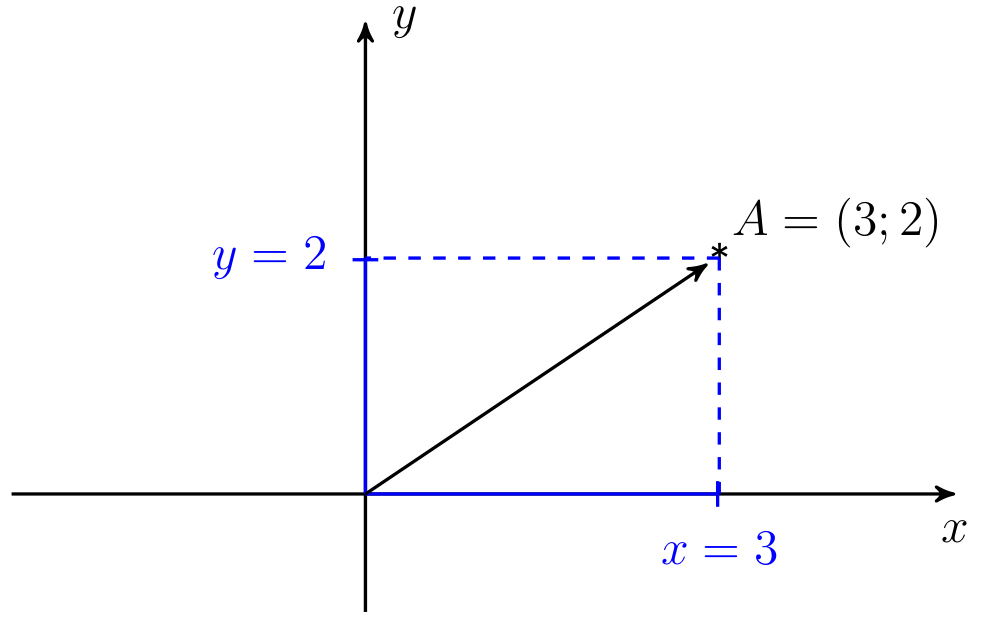Base of multivariate vectors (en)
2025-06-26
What is a vector? For natural number $n$ will call a n-variate vector list of n ordered real numbers $v = \begin{pmatrix}v_1&v_2&v_3&\ldots&v_n\end{pmatrix}$. Well the $n$ number is a vector dimension: $\dim{v} = n$. For $n$ number the set of all possible vectors will call $R^n$. The regular number we call “scalar”. For example, $5 \ - \ scalar$, but $\begin{pmatrix}1&3\end{pmatrix} \ - \ vector$.
The basic operations of vectors
- Sum of vectors is a sum of corresponding coordinates: $$ v + w = \begin{pmatrix}v_1 \\ v_2 \\ \ldots \\ v_n \end{pmatrix} + \begin{pmatrix}w_1 \\ w_2 \\ \ldots \\ w_n \end{pmatrix} = \begin{pmatrix}v_1 + w_1 \\ v_2 + w_2 \\ \ldots \\ v_n + w_n \end{pmatrix} $$
We can add vectors only they have same dimension. 2. Product of vector by scalar is a product off each coordinates by a scalar:
$$ \lambda v = \lambda \cdot \begin{pmatrix}v_1 \\ v_2 \\ \ldots \\ v_n \end{pmatrix} = \begin{pmatrix}\lambda v_1 \\ \lambda v_2 \\ \ldots \\ \lambda v_n \end{pmatrix} $$3. Difference of vectors is a sum of vectors, but one of vector product by scalar $-1$. 4. Scalar product of vectors:
$$ x \cdot y = \langle x;y\rangle = x_1 y_1 + x_2 y_2 + \ldots + x_n y_n = \sum \limits_{i = 1}^{n}x_i y_i $$Properties of scalar vectors product:
- Commutativity: $\langle v; w\rangle = \langle w; v\rangle$
- Distributivity over addition: $\langle x; (v + w)\rangle = \langle x; v\rangle + \langle x; w \rangle$
- Compatibility with scalar multiplication: $\langle v; \lambda w\rangle = \lambda \langle v;w\rangle$
- If scalar product equal zero we call this two vectors orthogonal or perpendicular
Geometric meaning
In geometry vector is a segment having a direction.

The length of vector we calculate with Pythagoras’s theorem: $||v|| = \sqrt{\sum\limits_{i = 1}^{n}{x_i}}$. If length of vector equal one we call it a unit vector. If $v$ not a unit vector we can change it multiplying by $\lambda = \frac{1}{||v||}$. We can calculate distance and angle between two vectors. Distance is a length of difference two vectors: $d = ||v - w|| = \sqrt{\sum\limits_{i = 1}^{n}{(v_i - w_i)^2}}$. Angle between two vectors follows from Law of Cosines:
$$ \cos{\theta} = \frac{\langle u;b \rangle}{||u||\ ||v||} $$Often be helpful: $||u|| = \sqrt{\langle u;u\rangle}$. Next operation is projection vector $u$ to vector $w$:
$$ Proj_w(u) = \frac{\langle u;w\rangle}{||w||^2}w $$Another property of vectors: module of scalar product does not exceed product of their length — the Cauchy–Schwarz inequality:
$$ -||v||\ ||w|| \leqslant \langle v;w\rangle \leqslant ||v||\ ||w|| $$The Triangle inequality: $||v + w|| \leqslant ||v|| + ||w||$, so length of sum of vectors less than or equal to sum of vectors lengths. If vectors is orthogonal, work the Pythagoras’s theorem: $||a + b||^2 = ||a||^2 + ||b||^2$.